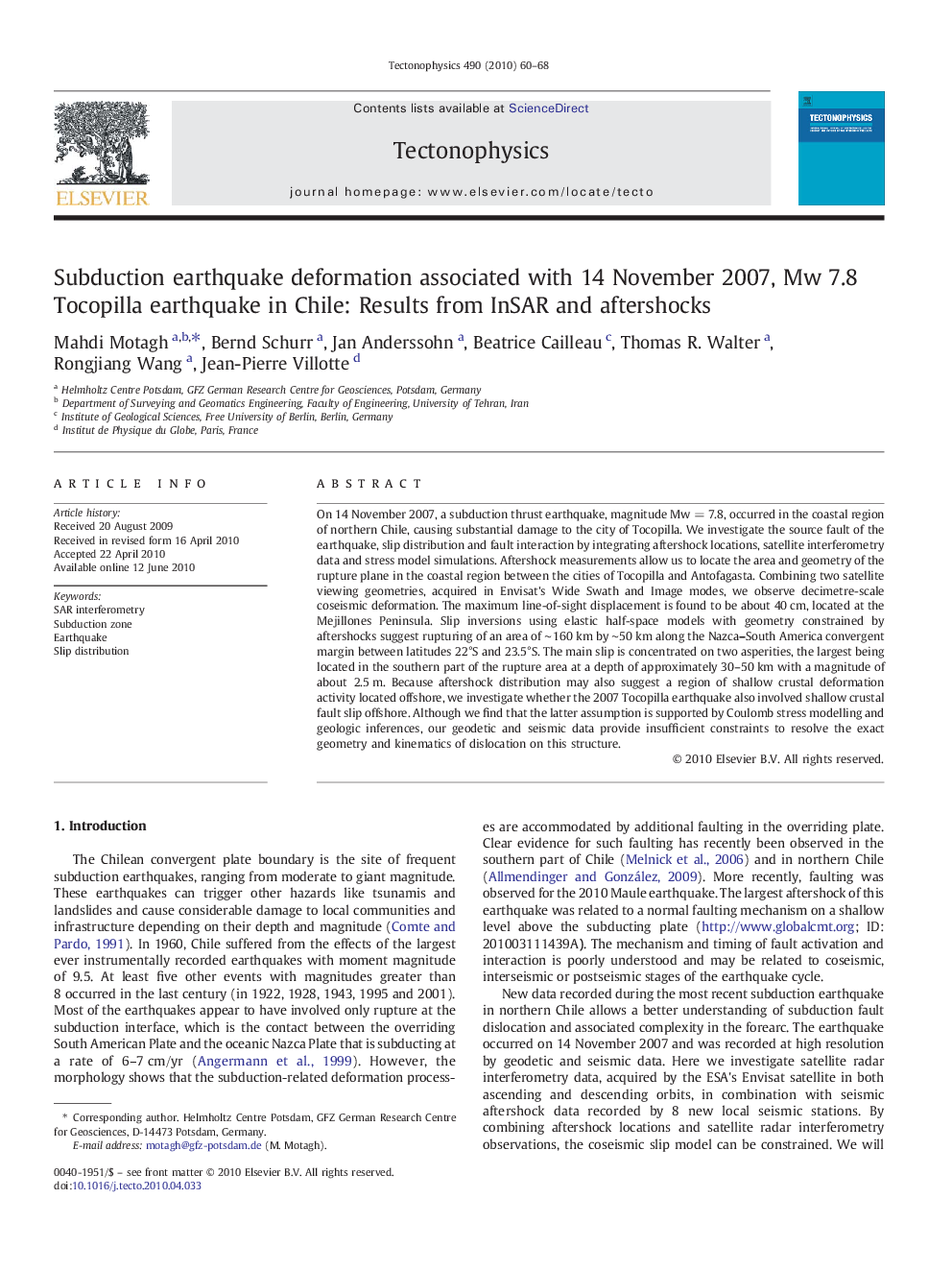| Article ID | Journal | Published Year | Pages | File Type |
|---|---|---|---|---|
| 4693470 | Tectonophysics | 2010 | 9 Pages |
On 14 November 2007, a subduction thrust earthquake, magnitude Mw = 7.8, occurred in the coastal region of northern Chile, causing substantial damage to the city of Tocopilla. We investigate the source fault of the earthquake, slip distribution and fault interaction by integrating aftershock locations, satellite interferometry data and stress model simulations. Aftershock measurements allow us to locate the area and geometry of the rupture plane in the coastal region between the cities of Tocopilla and Antofagasta. Combining two satellite viewing geometries, acquired in Envisat's Wide Swath and Image modes, we observe decimetre-scale coseismic deformation. The maximum line-of-sight displacement is found to be about 40 cm, located at the Mejillones Peninsula. Slip inversions using elastic half-space models with geometry constrained by aftershocks suggest rupturing of an area of ∼ 160 km by ∼50 km along the Nazca–South America convergent margin between latitudes 22°S and 23.5°S. The main slip is concentrated on two asperities, the largest being located in the southern part of the rupture area at a depth of approximately 30–50 km with a magnitude of about 2.5 m. Because aftershock distribution may also suggest a region of shallow crustal deformation activity located offshore, we investigate whether the 2007 Tocopilla earthquake also involved shallow crustal fault slip offshore. Although we find that the latter assumption is supported by Coulomb stress modelling and geologic inferences, our geodetic and seismic data provide insufficient constraints to resolve the exact geometry and kinematics of dislocation on this structure.
